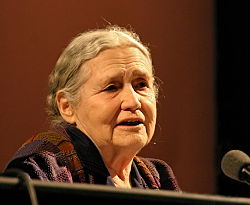
Itanium is the brand name for 64-bit Intel microprocessors that implement the Intel Itanium architecture (formerly called IA-64). Intel has released two processor families using the brand: the original Itanium and the Itanium 2. Starting November 1, 2007, new members of the second family are again called Itanium. The processors are marketed for use in enterprise servers and high-performance computing systems. The architecture originated at Hewlett-Packard (HP) and was later developed by HP and Intel together.
 |  |
Itanium's architecture differs dramatically from the x86 architectures (and the x86-64 extensions) used in other Intel processors. The architecture is based on explicit instruction-level parallelism, with the compiler making the decisions about which instructions to execute in parallel. This approach allows the processor to execute up to six instructions per clock cycle. By contrast with other superscalar architectures, Itanium does not have elaborate hardware to keep track of instruction dependencies during parallel execution - the compiler must keep track of these at build time instead.
After a protracted development process, the first Itanium was released in 2001, and more powerful Itanium processors have been released periodically. HP produces most Itanium-based systems, but several other manufacturers have also developed systems based on Itanium. As of 2007, Itanium is the fourth-most deployed microprocessor architecture for enterprise-class systems, behind x86-64, IBM POWER, and SPARC. Intel released its newest Itanium, codenamed Montvale, in November 2007.
Intel has extensively documented the Itanium instruction set and microarchitecture, and the technical press has provided overviews. The architecture has been renamed several times during its history. HP called it PA-WideWord. Intel later called it IA-64, then Itanium Processor Architecture (IPA), before settling on Intel Itanium Architecture, but it is still widely referred to as IA-64. It is a 64-bit register-rich explicitly-parallel architecture. The base data word is 64 bits, byte-addressable. The logical address space is 2^64 bytes. The architecture implements predication, speculation, and branch prediction. It uses a hardware register renaming mechanism rather than simple register windowing for parameter passing. The same mechanism is also used to permit parallel execution of loops. Speculation, prediction, predication, and renaming are under control of the compiler: each instruction word includes extra bits for this. This approach is the distinguishing characteristic of the architecture.
The architecture implements 128 integer registers, 128 floating point registers, 64 one-bit predicates, and eight branch registers. The floating point registers are 82 bits long to preserve precision for intermediate results.











